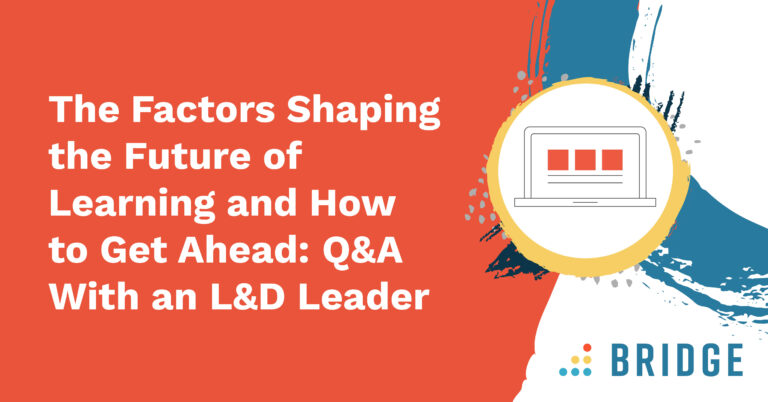Back in December 2020, we cracked open our fortune cookies, peered into our magic balls and set out 5 predictions for HR & HR technology in 2021. Unlike the fairground mystic that ups and disappears, we felt that now 2021 is truly getting underway we’d revisit and revise those HR predictions. What did we get right? Were any wrong? And what was missing?
1. Transformation and Digitisation
We predicted: Process transformation needs to be HR’s number 1 priority.
With the digital transformation that the pandemic-centric 2020 thrust upon us, we urged HR professionals not to simply move their processes online, but use the situation as an opportunity to reconsider their processes from start to finish.
Were we right? Definitely, we needed to take the opportunity to totally transform how we work. Many businesses took this up with confidence, opting for cloud-based holistic technology such as Bridge; ensuring that all processes relating to human capital are seamless and success enhancing.
However, we’re also aware that many businesses continued with the panic-stricken ‘make do’ approach of spring last year.
Should we revise it? We won’t revise this one, but we will urge those businesses that haven’t used 2020’s challenges as an opportunity for process transformation to get cracking. There will be a divergence between businesses that do and those who don’t as economies settle back down.
2. Company Culture and Engagement
We predicted: Despite the shift to remote working, and the desire for it to continue, company culture and engagement would evolve through the use of online solutions.
Were we right? There’s no doubting that business cultures have evolved over the last year owing to the prevalence of remote working. Where we were perhaps wrong is by saying that companies should allow this to happen organically. Whilst organic culture development and engagement is important, it needs to be facilitated.
Should we revise it? Yes – going forwards in 2021, businesses must actively work to promote and facilitate company culture and employee engagement owing to the challenges of remote working, as well as consider carefully when remote working doesn’t suit and not assume it is preferred. Engagement should be made simpler and easier. Fragmentation needs to be minimised by taking conscious steps to protect the culture of the organisation.
3. Neuroscience
We predicted: Neuroscience will become central to HR policies and processes. This was a complex prediction, involving discussion of the SCARF model, and we recommend you read it in full.
Were we right? Sort of! And it’s a little too soon to tell. Neuroscience can show us a lot about how to make our performance and learning management work at a higher level. However, it takes time to shift approaches and see the benefits of them. Change always involves some degree of kickback, and that needs to bed down before we can really see the results.
Should we revise it? No, keep adopting learning from neuroscience to promote engagement.
4. Mental Health and Wellbeing
We predicted: Mental health and wellbeing policies will become a C-suite issue.
Were we right? Yes, but more needs to be done. Unfortunately the pandemic has shone a spotlight on the mental health needs of our workforces.
Should we revise it? No, but we do urge HR professionals to push forward with raising the profile of employer support for mental health and wellbeing with greater urgency. In order for your organisation to recover from the pandemic, your employees need to feel mentally well, resilient and supported.
5. Re-Onboarding, Re-Skilling and the Non-9-to-5 Workforce
We predicted: A rise in getting employees back into the office, but perhaps in a slightly different way.
Were we right? Partly, but it’s taking longer than we hoped for.
Should we revise it? Across Europe, most office-based organisations are still operating predominantly remotely. Depending on the country and the success of their vaccine roll out, as well as other Covid mitigating measures, some are looking at office returns from the summer onwards. Others are holding fire on decisions. Many are totally rethinking how office –working will happen (if at all) in the future. There is no one size fits all for this prediction. What matters is that employers actively consider what will work best for their business and their workforce, and ensure they have the processes to enable efficiency and productivity, whatever their future working model is.
What’s to Come in 2021
Broadly speaking, our predictions were very in line with what is coming out so far in 2021.
In addition, we predict that there will be a faster bounce-back than anticipated and this will require HR professionals to strategically consider everything from hiring decisions to managing remote onboarding, re-onboarding and engagement. Already, the data is showing this to be true.



